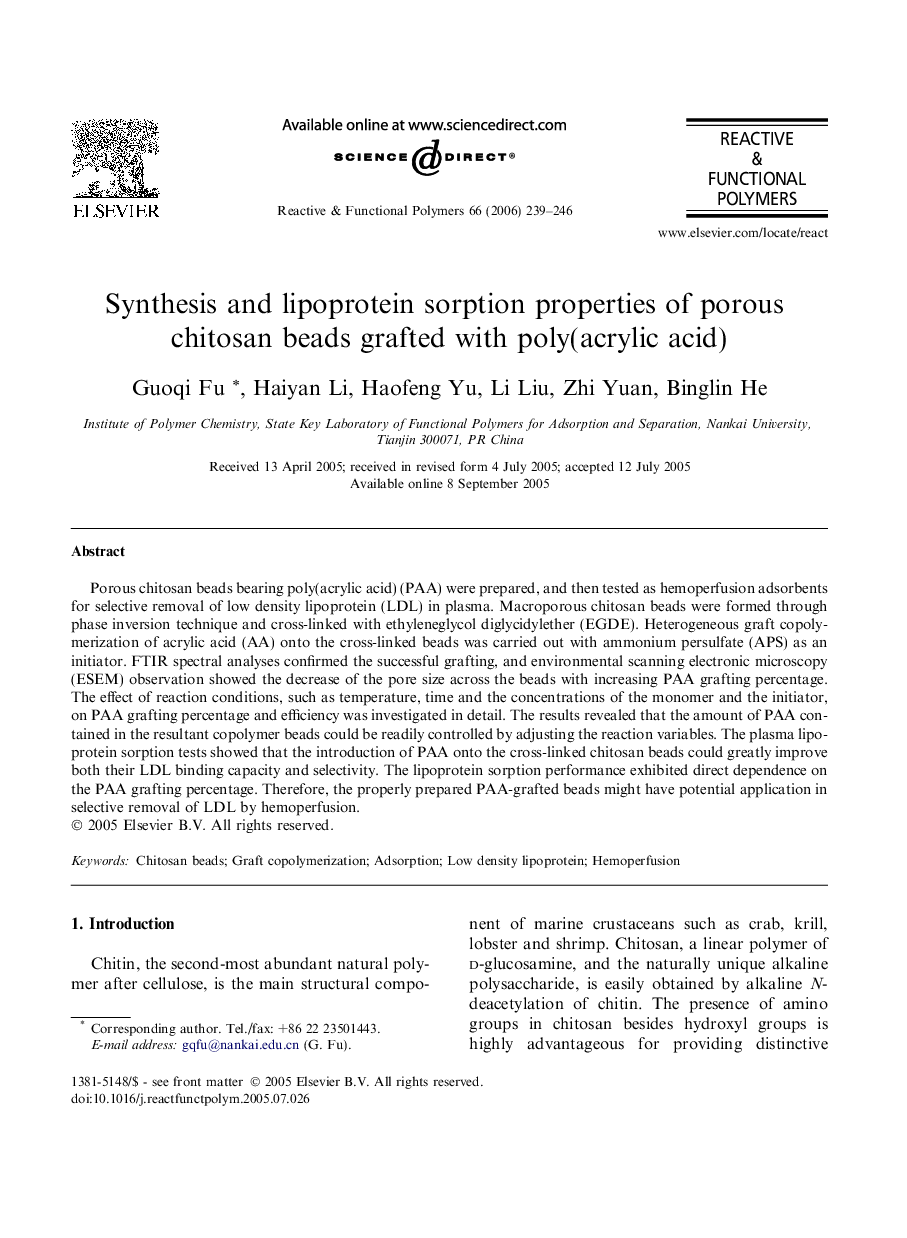| Article ID | Journal | Published Year | Pages | File Type |
|---|---|---|---|---|
| 5211815 | Reactive and Functional Polymers | 2006 | 8 Pages |
Abstract
Porous chitosan beads bearing poly(acrylic acid) (PAA) were prepared, and then tested as hemoperfusion adsorbents for selective removal of low density lipoprotein (LDL) in plasma. Macroporous chitosan beads were formed through phase inversion technique and cross-linked with ethyleneglycol diglycidylether (EGDE). Heterogeneous graft copolymerization of acrylic acid (AA) onto the cross-linked beads was carried out with ammonium persulfate (APS) as an initiator. FTIR spectral analyses confirmed the successful grafting, and environmental scanning electronic microscopy (ESEM) observation showed the decrease of the pore size across the beads with increasing PAA grafting percentage. The effect of reaction conditions, such as temperature, time and the concentrations of the monomer and the initiator, on PAA grafting percentage and efficiency was investigated in detail. The results revealed that the amount of PAA contained in the resultant copolymer beads could be readily controlled by adjusting the reaction variables. The plasma lipoprotein sorption tests showed that the introduction of PAA onto the cross-linked chitosan beads could greatly improve both their LDL binding capacity and selectivity. The lipoprotein sorption performance exhibited direct dependence on the PAA grafting percentage. Therefore, the properly prepared PAA-grafted beads might have potential application in selective removal of LDL by hemoperfusion.
Related Topics
Physical Sciences and Engineering
Chemistry
Organic Chemistry
Authors
Guoqi Fu, Haiyan Li, Haofeng Yu, Li Liu, Zhi Yuan, Binglin He,
